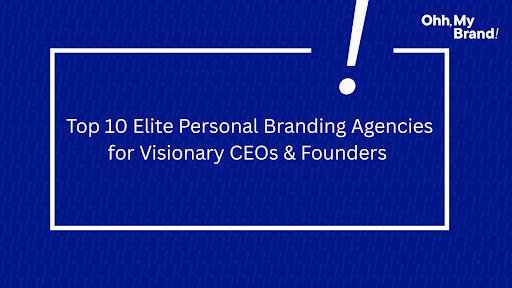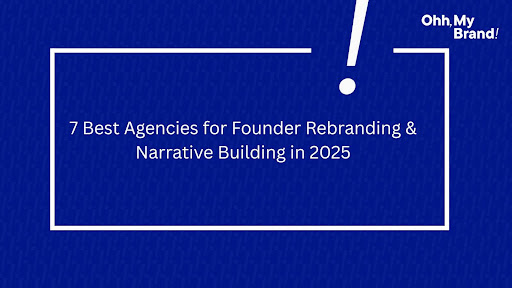

If you tell a lie multiple times, it becomes the truth for many people. Now, this has been the case with many ideas, aspects, elements, and factors. Especially in authentic branding, there is no such thing as a step-by-step guide or understanding of operations. Each brand handles it differently. Of course, there are areas that are common ground for things, but apart from that, there are a lot of things that personal branding books get wrong, and now we are here to fix it for you.
The problem with books on content is that at some point they all intersect with each other and offer the same advice, which people tend to fall for. In this blog, we’ll explore the common pitfalls in personal branding literature. Not just that, we have compiled this blog using multiple statistics and real-world examples that will give you a world view of brands and how things change & operate in the real world, not just in theory, not just in books.
The whole concept and drive behind this blog is to make sure we make our readers aware of the refined approach that addresses these shortcomings and how in our new personal branding ebook, “Become Someone From No One,” we made sure that we are not replicating the same mistakes and traps.
By focusing on authenticity, adaptability, and measurable outcomes, we’ve developed a framework that corrects these errors and empowers individuals to build sustainable, impactful personal brands. Not only in this blog, but you’ll be able to observe this in our personal branding ebook as well. With that in mind, let’s start comprehending the traps and common pitfalls in personal branding literature. Here are the top four of them:
The Oversimplification Trap
Whenever you come across a personal branding book, we can bet you that you will find a step-by-step guide on one of their pages or an entire chapter will be about it. The problem is not that they have a step-by-step process structured for you. The problem is the oversimplification. Most books talk about the personal branding problems as if the brand itself will not face any challenge if they follow a set path, basically a set path designed by the underlying book. So they present the entire process as something you do just in a casual way. So the book will narrate the process as if the brand should do this, then this, then that, followed by this, and end with this. Many personal branding books reduce the process to a formulaic set of steps: define your unique value, craft a catchy tagline, and promote yourself relentlessly. While this approach sounds appealing, it often ignores the complexity of human identity and the dynamic nature of professional environments.
Books like The Brand Called You by Peter Montoya and Tim Vandehey emphasize self-promotion and visibility but gloss over the importance of aligning personal values with audience expectations. This can lead to brands that feel inauthentic or disconnected. A 2023 survey by Edelman found that 88% of consumers value authenticity in branding efforts, yet many personal branding books prioritize offering the same content with polishing and skip on genuine connection. Every product is different, and every brand is different, so the one-size-fits-all advice isn’t prevalent.
Neglecting the Digital Ecosystem
We were astonished to see this, in literal shock that even in 2025, there are some personal branding books that are not focusing on the digital landscape at all. This was an utterly stunning situation for us when we saw that many personal branding books still have an outdated focus on traditional platforms like resumes and networking events, with insufficient attention to digital channels. This is also one of the reasons why in our personal branding ebook “Become Someone From No One,” created by Bhavik Sarkhedi and Sahil Gandhi, we made sure that we not only acknowledge, address, and make people aware of the importance of the digital ecosystem that we live in today but also offer key insights related to it.
Social media is now a critical component of personal branding, with 78% of recruiters using platforms like LinkedIn to evaluate candidates and 54% rejecting applicants due to poor online branding. Of course there have been books like Career Distinction by William Arruda and Kirsten Dixson (2007) that were groundbreaking in their time but lack guidance on navigating today’s social media-driven world. The rapid evolution of digital platforms demands a dynamic approach.
Ignoring Ethical and Cultural Dimensions
This has been a problem with many books along the way. A lot of personal branding books talk about aggressive self-promotion, which comes at the expense of authenticity and genuinely offering value. When you focus on promotion, remember that the product must add value or solve the problem as well. If it is not doing it, then what is the point, or what exactly are you trying to promote?
You need to pay close attention to cultural sensitivity in branding. Excessive promotion is often seen as something done by brands that offer low value and are weak in offering solutions. But again, many books suggest it to be done. We do not believe this. On the contrary, we believe that if the product is good, the customer should automatically promote it, and this looks more organic.
Underestimating Measurement and Adaptability
Lastly, we would like to mention that many personal branding books often talk about what should be done but eventually end up lacking on the part where they can tell about tools that are required for tracking outcomes. Of course, anyone who is ready with a book is interested in the digital branding strategy, and they will apply the formula or techniques mentioned in the book, but the problem is there has to be a way to gauge it and then use the insights to adapt to the change.
The common pitfall is just an extension of the oversimplification trap, because the book is offering the solution based on the assumption that everything will work out just the right way; it is being mentioned in the book, and there will be no hurdles, roadblocks, or challenges to be faced by the brand. A 2021 Lucidpress survey found that 33% of businesses report a 20% revenue increase from consistent branding, yet personal branding books rarely provide metrics like engagement rates or audience growth to gauge effectiveness.
The Fix: A Comprehensive, Modern Framework
Here’s how it works: we will talk about how to offer
Define Your Authentic Core
The book will only remain authentic if you write it in the right manner. Define your authentic core and stick to it. Unlike books that push generic taglines, start focusing on a deep self-assessment to identify the values, strengths, and unique contributions that you are willing to offer through the personal branding book. A HubSpot survey found that 72% of marketers use personalization to enhance branding, underscoring the need for authentic, tailored narratives.
2. Build a Multi-Platform Presence
Based on your industry and audience, provide templates for algorithm-friendly content. This ensures visibility while maintaining consistency.
3. Incorporate Cultural and Ethical Awareness
Instead of all the boring stuff that you can find in every book, include a cultural audit tool to assess your audience’s values and tailor your messaging. This addresses the ethical concerns.
4. Measure and Iterate
We mentioned this before: you need to publish content in your book that teaches the reader how they can gauge their progress and measure their performance. Research shows that 44% of a company’s market value is tied to its leader’s reputation, emphasizing the need for measurable impact. This means it becomes important for every brand to track their growth.
5. Engage and Adapt
We encourage active engagement through thought leadership and community building, leveraging user-generated content to boost credibility. A 2023 HubSpot study found that 36% of consumers engage with branded content on social media, highlighting the power of interaction. Our framework includes strategies for adapting to feedback and market shifts, ensuring long-term relevance.
Why This Matters in 2025
If every book is going to be a replica of the other, why is the reader spending so much time, effort, and money in consuming these personal branding books? The answer is simple: every book should be unique and stand on its own feet of authenticity and clarity of thought, which can be observed in its narrative. It's 2025, and if a reader is planning to invest themselves in your book, it becomes your duty to serve them with what they deserve, not something that they can read anything on the internet. By focusing on authenticity and adaptability, empower individuals to build brands that not only stand out but also endure.
Conclusion
Alright, now we have deduced the top 4 common traps that you can spot in most of the personal branding books, and now you also know how you can skip them to search for the right content. We discussed that the problem is that by oversimplifying strategies, neglecting digital platforms, ignoring ethical nuances, and underemphasizing measurement, they leave readers ill-equipped for today’s dynamic landscape making them fall short in data-driven personal brand. But that’s where we understood the issue and corrected these flaws, offering a comprehensive, adaptable approach grounded in authenticity and data that comes in our personal branding ebook that you can check out here. Whether you’re a job seeker, entrepreneur, or executive. Download the Personal Branding Gold Mine eBook to ensure your personal brand is impactful, relevant, and aligned with your goals. Start building your brand today.









.svg)
.svg)
.svg)
.svg)
